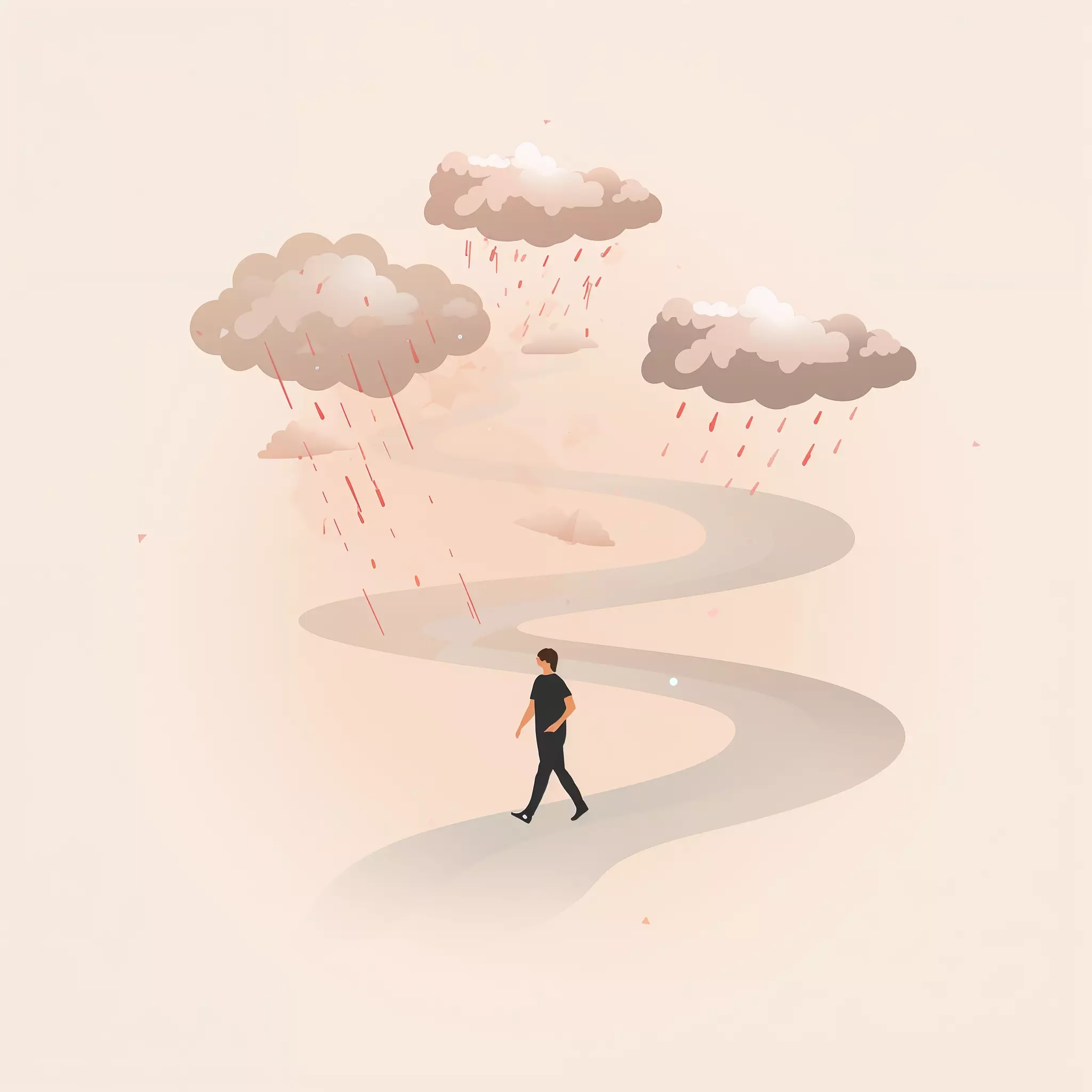Table of Contents
You may have wondered, in the middle of heartbreak, if you could just skip the messier parts of breakup grief stages. Maybe you’ve thought, If I could leap over anger or despair and land straight in acceptance, I’d be fine. It’s an understandable wish—because who wants to linger in grief? But the truth is, there’s no shortcut. Healing doesn’t come by dodging certain feelings. It comes by letting each one pass through you in its own way.
The Myth of Skipping a Stage in Breakup Grief Stages
The idea of grief as a five-step ladder—denial, anger, bargaining, depression, acceptance—makes it sound like you can climb two rungs at a time or hop over one. But grief isn’t a staircase. Research following people through loss shows that the emotions linked to these “stages” do show up, but rarely in order, and never as neatly as the model suggests. Acceptance can appear surprisingly early, anger may resurface months later, and sadness may come in waves instead of one heavy block.
You’re not missing pieces; you’re simply experiencing them differently.

Why Skipping Feels Real
Sometimes people are convinced they’ve skipped a stage because they haven’t felt what they expected. Maybe you never felt denial, or bargaining never showed up in your vocabulary. But what’s more likely is that grief moves in cycles, not lines. The Dual Process Model of grief suggests we don’t march forward through stages—we oscillate. One day you’re deep in loss-oriented pain—crying, remembering, missing. The next, you’re in restoration mode—focusing on work, meeting friends, trying to rebuild. That oscillation can make it feel like you bypassed certain feelings, when in reality, you’ve simply woven them differently into your healing.

Why Breakups Hurt So Much (Science of Heartbreak & Healing)
Let’s examine breakups in: Biology of love & loss, Attachment styles, Rejection psychology, Closure, Rumination, Grief
Tap here to read more →When Breakup Grief Stages Don’t Show Up at All
And then there’s another truth: not everyone feels every stage. Some people are resilient from the start, adjusting more quickly than they imagined. Others may sink into long-term sadness without obvious spikes of anger or denial. Research on grief trajectories shows that there isn’t one universal path. This doesn’t mean you’ve failed at grieving. It means your mind and body are doing what they need to adapt.

Final Thought
Grief after a breakup is less like walking a straight road and more like wandering through weather. Storms roll in and fade, skies clear and cloud again. You can’t skip the weather—but you also don’t have to stand in the rain forever. The point isn’t to conquer each stage, it’s to keep moving, knowing that however your healing unfolds, it’s still healing.
FAQ
Q1. Can you really skip a stage of breakup grief?
No, you can’t skip a stage. While the stages of breakup grief may not show up in order, research shows that most people experience some form of each. What looks like “skipping” is usually the natural overlap or cycling between emotions.
Q2. Why do breakup grief stages feel different for everyone?
Because grief is not one-size-fits-all. Some people feel anger first, others sink into sadness, and some may move quickly toward acceptance. Your personal history, relationship length, and coping style all influence how breakup grief stages unfold.
Q3. What if I don’t feel all the stages of breakup grief?
That’s normal. Many people never experience certain stages strongly—or at all. This doesn’t mean you’re healing wrong; it simply means your grieving process is unique to you.
Q4. How long does it take to move through breakup grief stages?
There’s no fixed timeline. Some people notice major emotional shifts within months, while others need longer. The key is progress—moving forward little by little—rather than checking off stages on a schedule.
Scientific Sources
-
Maciejewski, P.K., Zhang, B., Block, S.D., Prigerson, H.G. (2007): An Empirical Examination of the Stage Theory of Grief
Key Finding: Grief indicators did follow the proposed sequence of stages, but not in a clean, linear order. Acceptance often appeared early, and emotions peaked at different times.
Why Relevant: Shows that breakup grief may not follow a strict step-by-step path, supporting the idea that ‘skipping’ isn’t really possible but reordering is normal.
https://pubmed.ncbi.nlm.nih.gov/17312291/ -
Bonanno, George A. (2002): Resilience to Loss and Chronic Grief: A Prospective Study
Key Finding: Identified multiple grief trajectories—resilience, recovery, chronic grief, and chronic depression—showing many people never follow a stage-based path.
Why Relevant: Supports the claim that stages are not universal, and people adapt differently to breakups.
https://pubmed.ncbi.nlm.nih.gov/12416919/ -
Stroebe, M., Schut, H. (1999): The Dual Process Model of Coping with Bereavement
Key Finding: Grief involves oscillation between loss-oriented and restoration-oriented coping, not linear stages.
Why Relevant: Provides an alternative model showing why skipping isn’t the right way to think about grief stages.
https://en.wikipedia.org/wiki/Dual_process_model_of_coping
- Breakup Grief vs Sadness: The Powerful Truth You Need to Know

- Breakup Grief Stages: Why You Can’t Skip One (and Why That’s Okay)

- Breakup Grief Timeline: How Long It Really Lasts and When Healing Begins

- Why the Stages of Grief After a Breakup Don’t Go in Order (and What It Really Means)

- Acceptance After a Breakup: Why It’s Not Peace but Powerful Progress

- Breakup Depression: Why It Feels Like You’ll Never Be Okay

- The Bargaining Stage of a Breakup: Escaping the ‘What If I Text Them?’ Trap

- Breakup Anger: The Untold Truth About the Rage Phase and How to Heal

- Denial After a Breakup: Why Numbness Is Normal (and Necessary)


Leave a Reply